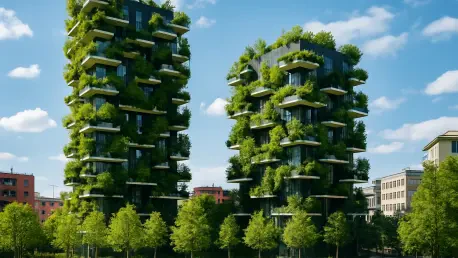I’m thrilled to sit down with Luca Calaraili, a renowned expert in construction, design, and architecture, who has dedicated his career to pushing the boundaries of sustainable innovation in the built environment. With a deep passion for integrating technology and forward-thinking tools into the industry, Luca brings a unique perspective on how construction can harmonize with nature. Today, we’ll dive into his insights on a groundbreaking collaboration between a leading construction firm and a nature-focused organization, exploring how this partnership aims to redefine the role of nature in urban spaces, inspire industry-wide change, and prioritize biodiversity alongside innovation.
Can you share what drives a construction company to partner with an organization focused on nature recovery, and what specific outcomes such a collaboration hopes to achieve?
Absolutely. The inspiration often comes from a growing recognition that our industry has historically contributed to environmental decline, and there’s a pressing need to reverse that trend. Partnering with an organization dedicated to nature recovery offers a chance to blend expertise—construction know-how with ecological insight—to create spaces that don’t just serve humans but also support biodiversity. The goals are multifaceted: to embed nature into every project phase, improve wellbeing through green spaces, and ultimately set a new standard for the industry by proving that development and nature can coexist.
How would you define ‘nature recovery’ when it comes to integrating it into the built environment?
Nature recovery, in this context, means actively designing and constructing spaces that restore and enhance ecosystems rather than deplete them. It’s about seeing buildings, infrastructure, and urban areas as opportunities to support wildlife and greenery, even in the most industrial settings. Think of it as creating habitats—whether through green roofs, living walls, or biodiverse courtyards—that invite nature back into spaces we’ve long separated from it. It’s a mindset shift, prioritizing ecological health as much as structural integrity.
In what ways can educational initiatives help foster a deeper understanding of nature recovery within the construction sector?
Education is critical because it builds awareness and shifts perspectives. Programs can range from workshops for employees on biodiversity principles to client seminars showcasing the benefits of nature-inclusive design. They spark curiosity by connecting people to tangible impacts—like how a green space can improve mental health or reduce urban heat. Targeting everyone from staff to community stakeholders ensures a broad base of support, and over time, these efforts can transform how the industry values nature. Measuring success might involve surveys on attitude changes or tracking participation in nature-focused projects.
How can construction projects strike a balance between cutting-edge innovation and supporting biodiversity?
It starts with collaboration—working closely with clients and partners to design projects where innovation serves nature, not competes with it. For instance, using sustainable materials or smart tech to monitor environmental impact can enhance biodiversity without sacrificing progress. Projects like hospitals or schools are often ideal starting points because there’s a clear human benefit to green spaces, like healing gardens for patients. The challenge lies in cost and space constraints, but by prioritizing modular green solutions or integrating nature into structural elements, we can overcome those hurdles.
What are some effective strategies for leading by example and breaking down barriers to adopting nature-based solutions in construction?
Leading by example means showcasing real, replicable projects that demonstrate nature-based solutions work—think green bridges or wildlife habitats within urban developments. Barriers often include lack of awareness, budget concerns, or regulatory gaps, so we need to address those head-on by sharing data on long-term cost savings and wellbeing benefits. Transparency is key—openly documenting successes and even failures helps build trust and encourages others in the industry to take the leap. It’s about creating a ripple effect of change.
Why focus on specific areas like health and education projects or internal office spaces when integrating nature into construction?
These areas are chosen because they offer high impact for both people and the environment. Health and education spaces directly influence wellbeing—imagine a hospital with a healing garden where patients recover faster surrounded by greenery, or a school with outdoor learning areas that connect kids to nature. Similarly, adding nature-rich breakout spaces to offices or work sites boosts employee morale and productivity. It’s a win-win: these spaces prove the value of nature integration while benefiting those who use them daily.
What is your forecast for the future of nature recovery in the built environment over the next decade?
I’m optimistic but realistic. Over the next decade, I believe we’ll see nature recovery become a non-negotiable part of construction, driven by stricter regulations, client demand, and a growing body of evidence on its benefits. We’ll likely see more innovative designs—think entire buildings as ecosystems—and technology will play a bigger role in monitoring and enhancing biodiversity. However, it’ll require collective action across the industry to overcome inertia and investment challenges. If we keep pushing collaborations like this one, I think we can truly reimagine our built world as a space where nature thrives alongside us.









